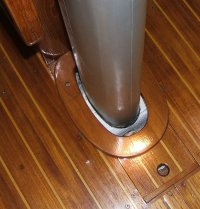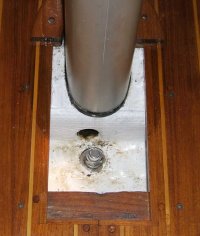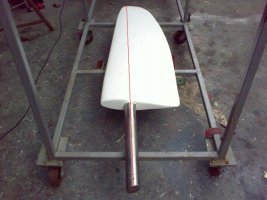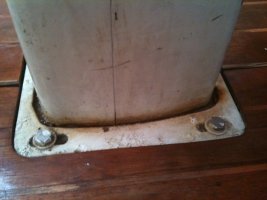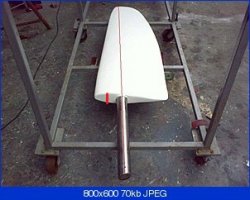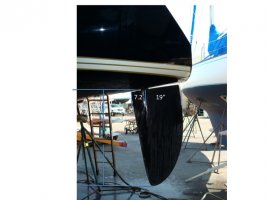Our mast base fits flat, on top of a wider "hat section" glassed-in stringer.So another question to Olson 34 owners - does the mast have any angled mast base or anything under the mast to tilt it backwards ?
Do you use any specially designed wedges where the mast comes through the deck to push it backwards ?
When I removed the original molded vinyl "boot" for the mast penetration thru the cabin top, I found 4 wedges. The front and back ones were carved into matching curves in teak and there were a couple of short side ones. As I (dimly) recall, my spar was much closer to the front of the FRP-molded-in-collar in the housetop. Not being much of a wood carver, I made up a piece of teak in an L shape, to give it a "shoulder" to keep the future wedges from falling thru, since they fill in a parallel open between spar wall and FRP molding, and then cut them into sections about an inch long. The front ones, having allow for the curvature were maybe a half inch wide. I equal spaced the gap all the way around. Come to think of it, I probably induced a little weather helm... since the spar was closer to the front of the opening when I first got the boat. Hmmm......
Oh well, a little weather helm is a good thing.
As to the step, I will have to try to get some photos. As I recall, it is the same Kenyon spar and cast step that I see on same-era Ericsons around here.
If you have the boot off the mast base, how 'bout posting up some closeup photos? Some pix of the base might be helpful, too. Admittedly getting a good closeup of the rear of the base would mean removing the table, the backside curved teak trim, and the center cabin sole halves. The forward part is easy to see by lifting out the teak drop-in trim piece.
I have been blathering on about "Kenyon" because that was the Ericson (and Olson) spar maker thru the mid-late 80's. Is that in fact what your boat has?
After all, I know of at least one Olson in California that was retrofitted with a Ballenger spar. www.ballengerspars.com
Regards,
Loren
ps: edit to add photos showing front of spar foot -- note that the stock base casting has no provision for fore n aft movement.
Attachments
Last edited:

